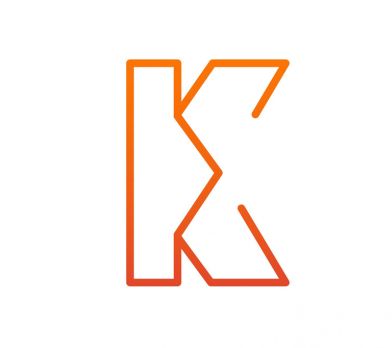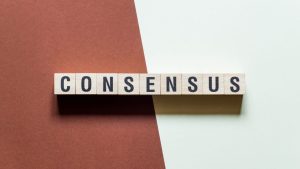Neural networks are powerful computational models that enable machines to recognize patterns and make decisions based on data. The process by which neural networks learn from training data is both intricate and fascinating. This article delves into the inner workings of neural networks, focusing on how they learn and the role of optimization algorithms like gradient descent in this process.
1. Understanding Neural Networks
Neural networks are inspired by the human brain's architecture, consisting of layers of interconnected nodes or "neurons." Each neuron receives input, processes it, and passes on its output to the next layer. The structure typically includes:
- Input Layer: Receives the initial data.
- Hidden Layers: Intermediate layers that process inputs received from the previous layer using weights and biases.
- Output Layer: Produces the final output of the network.
2. The Role of Weights and Biases
Each connection between neurons has an associated weight, and each neuron has a bias. Weights and biases are the learnable parameters of a neural network. They adjust during training to minimize the difference between the predicted output and the actual target values. The process involves:
- Initialization: Weights and biases are initially set to small random values.
- Forward Propagation: Data is passed through the network, from the input layer through the hidden layers to the output layer, to compute the prediction.
3. The Learning Process
Learning in neural networks occurs through a process known as training. Here’s how it typically unfolds:
- Training Data: The model learns from a dataset containing inputs paired with correct outputs.
- Loss Function: A function that measures the error between the predicted values and the actual values. Common examples include mean squared error for regression tasks and cross-entropy loss for classification tasks.
4. Optimization with Gradient Descent
Gradient descent is a cornerstone optimization algorithm used to minimize the loss function. It works by iteratively adjusting the weights and biases in the direction that most steeply decreases the loss. The steps include:
- Compute Gradient: The gradient of the loss function with respect to each weight and bias is calculated. This gradient indicates the direction and rate of fastest increase in loss.
- Update Parameters: Weights and biases are updated by moving a small step in the opposite direction of the gradient.
- Learning Rate: A parameter that determines the size of the step to take on each update. A smaller learning rate might slow down learning, while a larger rate might overshoot the minimal loss.
5. Backpropagation
Backpropagation is the algorithm used for computing the gradient of the loss function in neural networks. It efficiently computes the gradient by:
- Chain Rule: Applying the chain rule of calculus to find the derivatives of the loss function with respect to each weight and bias.
- Reverse Pass: Starting from the output layer and moving backward through the network, gradients are propagated back to update the weights and biases.
6. Iterative Learning
The training process involves several iterations or epochs over the training data. During each epoch, all training examples are passed through the network, and adjustments are made to the weights and biases. The process repeats until the network achieves a desirable level of accuracy or a set number of epochs is reached.
7. Challenges and Considerations
- Overfitting: Occurs when a model learns the training data too well, including the noise and errors, and performs poorly on new data.
- Underfitting: Happens when a model is too simple to learn the underlying pattern of the data.
- Regularization Techniques: Methods like L1 and L2 regularization can help prevent overfitting by adding a penalty for larger weights.
In summary, the process by which neural networks learn from training data is central to the development of accurate and robust predictive models. By iteratively adjusting weights and biases to minimize a loss function through methods like gradient descent and backpropagation, neural networks can learn complex patterns and make intelligent decisions based on data. Understanding these mechanisms is crucial for designing networks that perform well on real-world tasks.
High-quality AI Training Data at Kotwel
To effectively train neural networks, quality data is crucial. At Kotwel, we specialize in providing top-notch AI training data services to ensure your models are not only accurate but also robust. By supplying diverse and well-prepared datasets, Kotwel aids in optimizing your AI projects, making the complex task of training neural networks simpler and more efficient.
Visit our website to learn more about our services and how we can support your innovative AI projects.
Kotwel is a reliable data service provider, offering custom AI solutions and high-quality AI training data for companies worldwide. Data services at Kotwel include data collection, data labeling (data annotation) and data validation that help get more out of your algorithms by generating, labeling and validating unique and high-quality training data, specifically tailored to your needs.
Frequently Asked Questions
You might be interested in:
Data labeling is a critical component of machine learning that involves tagging data with one or more labels to identify its features or content. As machine learning applications expand, ensuring high-quality data labeling becomes increasingly important, especially when scaling up operations. Poorly labeled data […]
Read MoreMachine learning models are only as good as the data they learn from, making the quality of data labeling a pivotal factor in determining model reliability and effectiveness. This blog post explores the concept of consensus-based labeling and its crucial role in enhancing trust […]
Read MoreContinuous learning in artificial intelligence (AI) is an essential strategy for the ongoing enhancement and refinement of AI models. This iterative process involves experimentation, evaluation, and feedback loops, allowing developers to adapt AI systems to new data, emerging requirements, and changing environments. This article […]
Read More




